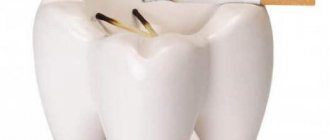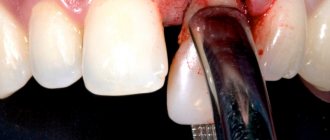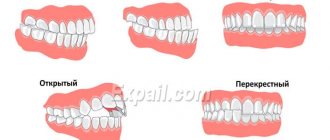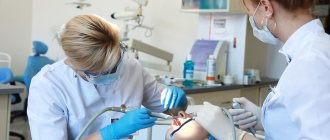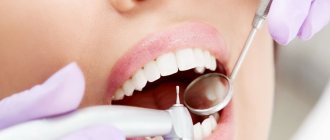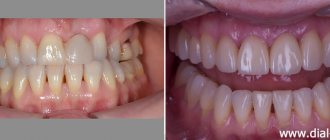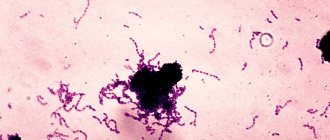Correcting occlusion abnormalities is a long process. It takes months and sometimes years, during which the patient may experience a variety of dental diseases. Braces themselves increase the likelihood of developing tooth decay. All this has led to the fact that at each stage of orthodontic treatment, a whole range of measures is used to prevent and eliminate oral problems. Particular attention is paid to preparation.
Before a patient has a fixed orthodontic design installed, a complete sanitation of the oral cavity is carried out. This procedure includes:
- identification of carious cavities, their cleaning and filling;
- removal of decayed teeth that cannot be treated or restored;
- removal of dental deposits (plaque and tartar);
- elimination of inflammatory processes in the soft tissues of the oral cavity.
The preparatory stage can take quite a long time and require several visits to the clinic. However, such financial and time costs are justified: in this way the patient will save himself from a large number of problems that could otherwise arise during orthodontic bite correction.
Is it necessary to carry out hygienic cleaning before installing braces?
If there is evidence for this, then it is necessary, since braces must be installed on clean enamel. It is important that there is no accumulation of plaque underneath them, otherwise caries may develop under the braces. In addition, if there is a lot of plaque, it will be difficult to remove it with braces - it is better to do this before the system is fixed.
However, if you have recently had dental hygiene, it is better to postpone the procedure a little and go through it 2-3 months after installing the braces system - it will be much more effective.
Wisdom teeth before installing braces: remove or leave?
The answer to this question will be given by the orthodontist after assessing the degree of development of the pathology and the characteristics of the dental system of a particular patient. Unerupted or incompletely erupted “figure eights” lying in the jaw bone horizontally or at an angle must be removed. They disrupt the functionality of neighboring teeth and the supporting apparatus. Extraction may also be recommended if there is insufficient space in the jawbone to move the teeth under the influence of the orthodontic arch in the right direction.
What products are needed to care for teeth with braces?
Caring for teeth with braces
| Name | Description |
| Various toothbrushes | Braces are placed in stages: first on the upper jaw, after a few weeks or even months - on the lower jaw. Therefore, you can brush your teeth without braces as usual. But for those teeth that have braces attached, it is better to purchase a brush with a V-shaped groove specifically designed for braces. Additionally, thin mono-tuft brushes will be useful, which will allow you to reach narrow and hard-to-reach places and better clean the braces themselves. Try different options - this way you can choose the best and most convenient one for yourself, and your attending physician will evaluate how well you perform hygiene with the chosen products. |
| Toothpaste | After installing braces, teeth often break, the enamel becomes thinner, and the teeth react sharply to external influences. Therefore, a toothpaste for sensitive teeth must be in your arsenal. After the condition of the enamel is normalized, it can be changed to whitening or anti-plaque. Do not forget to change the paste every 3-4 months or even more often, selecting it in accordance with the problems that you have. |
| Interdental brushes and/or dental floss | Use after every meal, carefully cleaning the interdental spaces. Also use brushes under the arch and along the top of the plates - these are places where pieces of food often remain. Choose the product of the desired thickness - start with the thinnest ones and choose the option that is right for you, taking into account the size of the spaces between the teeth. It is better if the kit includes brushes of different sizes - for different intervals. |
| Irrigator | It is not only possible to use it, but also absolutely necessary to clean the interdental spaces. |
| Mouthwash | Choose any one that suits you - you can leave the one you used before installing braces. |
| Protective wax | Buy it on the first day, since braces (their protruding edges and arch) can rub the inside of the cheeks, especially in the first days. |
| Travel set | At first glance, this may seem like a waste of money, but this is a great option for those who travel often or lead an active lifestyle - throw this set in your purse and carry out hygiene after any snack. You can form it yourself by packing all the necessary products in a small cosmetic bag. |
Can I use an electric toothbrush?
Ultrasonic is not possible, conventional electric is possible. The first can lead to the plates coming off, the second should not have a moving head and strong vibration - this will not harm the braces, but it will be inconvenient for you to use such a brush, since the bristles will get stuck. You can use several toothbrushes at once - a regular one to clean the inner surface of the teeth, and an orthodontic one to clean the outer surface where the braces are located.
“The braces are fixed quite securely - you need to try hard to peel them off the surface of the teeth. Therefore, hygiene must be carried out without fear and in no case reducing its intensity, making allowances for braces. If the care is poor, after removing the system we will find caries and white spots on the enamel.”
Rustamova Gunel Bakhmanovna, dentist-orthodontist, work experience more than 4 years make an appointment
Three types of absolute contraindications to wearing braces
- Systemic diseases that significantly complicate the patient’s general condition, which usually include a number of problems with the immune, cardiovascular, endocrine and hematopoietic systems, as well as oncology, tuberculosis and HIV.
- Diseases in which the process of healing and restoration of bone tissue is disrupted - from osteoporosis and dysplasia to congenital osteopathy and osteonecrosis.
- Neuropsychiatric diseases in which the patient is unable to cooperate with the orthodontist, since he does not perceive the manipulations being performed and cannot follow the recommendations given to him.
Fortunately, dentists rarely have to deal with absolute contraindications, but if a patient has such health problems, the possibility of prescribing orthodontic treatment is nullified.
What diet should you follow?
There are three main rules that must be followed after installing braces:
- avoidance of excessively hard and “sticky” foods – nuts, seeds, toffees, chewing gums,
- hard fruits and vegetables, meat must be cut into small pieces, chewing with side teeth,
- food and drinks should be warm, but not hot - this can lead to the records coming off.
Your diet should remain unchanged, with the exception of the three points listed. Do not overuse liquid and soft foods - your teeth must receive stress for normal functioning. You can minimize the consumption of viscous foods (chocolate, waffles, chips) - but not because they are prohibited, but because they accumulate on braces and under the archwire. They will simply be very difficult to remove.
Relative contraindications: when the impossible is possible
Relative contraindications are internal and external. In most cases, with the help of a competent medical approach, they can be minimized and will not affect the patient’s health. These include:
- an allergic reaction of the patient to the material of the braces - most often to metal; it will not be difficult to exclude the manifestation of allergies by selecting affordable braces made of hypoallergenic material;
- severe degrees of periodontal disease and periodontitis, when treatment can lead to accelerated resorption of bone tissue; a professional approach in a number of cases allows not only to avoid this, but even to stabilize the situation;
- low level of oral hygiene that has become habitual for the patient; this factor seriously complicates orthodontic treatment and increases the likelihood of complications, but if the patient has already sought advice from an orthodontist, then you can talk to him about increasing the level of self-discipline and count on normalization of the situation.
How to eat immediately after getting braces
In the first 1-2 weeks after installing braces (as well as after their activation), especially with a significant defect and the choice of ligature structures (they put more pressure on the teeth than self-ligating ones), you will experience pain. The degree of intensity is completely different and depends on many factors, including your sensitivity. Therefore, if at first you find it painful and unpleasant to eat your usual food, change it to a more liquid one - give preference to soups, dairy products, yoghurts, or puree the main dishes. This will reduce the load on the teeth and reduce painful manifestations.
How to put braces on teeth: direct and indirect methods
The next step in working with patients is directly fixing the braces. They do this in one of two ways:
- direct - a classic option used in every dental clinic;
- indirect - a progressive method that is gaining popularity.
A video on installing braces traditionally introduces the direct fixation method:
Direct method of installing braces
The orthodontist glues braces to each tooth one by one, based on a panoramic photograph of the jaw and the calculations made. The work is jewelry, highly precise, requiring care and concentration.
Stages of fixing the bracket system in a direct way:
- Installing an expander into the patient's mouth so that the orthodontist can clearly see and have access to all teeth.
- Fixation of orthodontic rings to the outermost units - “sixes” or “sevens”. The rings will serve as reference points for the entire system.
- Additional cleaning and polishing of tooth enamel to remove the smallest plaque particles.
- Drying the teeth with an air jet and insulating the tongue with a special “plug”.
- Application of components of an adhesive system to the teeth and plates, which, under the influence of ultraviolet radiation, will ensure the strongest fixation of each bracket.
- Cementing the rings on the outer teeth and passing a metal wire through each clasp is activating the braces.
- Removing excess orthodontic arch wire with nippers.
- Freeing the oral cavity from the dilator and tongue-fixing device.
First of all, braces are placed on the upper jaw and only then on the lower jaw. For the convenience of the patient, appointments can be spaced out in time so that there is an opportunity to adapt to wearing braces.
Devices are rarely attached to only one jaw - these are rather exceptional situations than everyday practice.
Indirect method of fixing the bracket system
This algorithm differs from the previous one in that part of the work is carried out outside the patient’s mouth.
In a dental laboratory, a technician uses dental impressions to make a plaster model. On it, the doctor places the locks at precisely calculated points and connects them with a metal arc. Afterwards, the resulting system is transferred to a mouthguard and placed on the corrected dentition. This allows you to fix the entire structure at once - quickly and comfortably for the child.
Rules for daily hygiene care
If you have braces, you should make it a rule to take care of your teeth every day - morning, evening and after every snack. This will help maintain healthy teeth and a snow-white shade of enamel after removing braces.
- Brush your teeth with a brush and toothpaste in the morning and evening. If you have a special brush, it is necessary to carry out horizontal movements along the arch of the braces (there is a recess inside the bristles for the arch). Use a regular brush without strong pressure, using both horizontal and vertical movements. Move the head actively, clean each record separately,
- After the main cleaning, use a single-tuft brush or brushes to clean every gap between the brackets/archwires, the surface of the teeth, as well as the plates themselves, top and bottom. Pay special attention to the brackets that are located on the farthest teeth - it is on them that the largest amount of plaque accumulates, since it is with these elements that we chew food,
- Rinse your mouth with water and mouthwash for 1-2 minutes.
Cleaning can also be supplemented with an irrigator (can also be directed at the plates - the pressure should be reduced only in the presence of ceramic and sapphire systems) and dental floss.
Preventive measures
To avoid the need for repeated treatment of caries with braces, you need to take measures. To prevent dental diseases it is important:
- use orthodontic brushes, irrigator and floss for high-quality cleaning of teeth and interdental space,
- use fluoride-containing pastes and rinses for everyday hygiene,
- regularly visit the orthodontist - during the examination, the doctor will not only assess the progress in treatment, but will also be able to detect the first signs of caries.
Why do my teeth hurt after installing and activating braces?
In the first days after installation, and subsequently after activation of braces, aching sensations of varying degrees of intensity are possible - the stronger the defect, the greater the pain. When fixing ligature systems, the pressure is greater, so the teeth will hurt more. Soreness in general is a completely normal reaction, since braces from the first minutes after fixation already have an impact on the teeth and change their position.
If the pain is severe, then in the first days after installation or activation of the system, you can take painkillers. But no more than 2-3 days. If discomfort persists, contact your orthodontist for system correction.
When is it better to treat caries with braces?
One of the most difficult types of caries is interdental. It develops between the teeth and lasts for a long time in a hidden form. It can only be detected during an X-ray or laser examination. However, the complexity of the pathology lies not in diagnosis, but in treatment.
Interdental hidden caries forces the doctor to prepare not only the diseased tooth, but also the healthy tooth, since the specialist needs to gain access to the carious cavity and make room for a filling.
If hidden caries develops due to crowded teeth, treatment may be delayed until the defect is corrected. First, the orthodontist will install braces, and after a while, when the teeth change their position a little, he will cure caries. Thus, an orthodontic design can simplify the procedure if a patient is diagnosed with interdental caries due to crowded teeth.
What to do if your braces chafe?
For inflammation of the mucous membranes, you can use special gels and ointments that have an antiseptic and soothing effect - for example, Metrogyl Denta, Vinilin.
To prevent inflammation, it is also recommended to use orthodontic wax. The purpose of its use is to isolate and protect soft mucous membranes from solid elements of the system. Apply to sharp protruding parts and replace as they fall off. It is recommended to remove the wax while eating.
Silicone strips for braces, like wax, are used to protect soft mucous membranes. Silicone is presented in the form of strips that can be used to cover one bracket or the entire row. Unlike wax, it does not crumble and is used repeatedly.
What is not allowed during orthodontic treatment?
A number of dental procedures can disrupt the course of orthodontic treatment, and sometimes make it simply impossible. Such procedures include:
- Dental prosthetics with installation of titanium implants. Metal implants fuse with the bone and, unlike tooth roots, do not move into the bone under the pressure of the braces system.
- Installation of pins. Restoring the tooth root using a pin increases the reliability of fixation of the artificial crown, but contributes to improper distribution of the load on the root during orthodontic correction. This can lead to damage or complete destruction of the tooth root.
- Tooth extraction. Before the correction begins, this manipulation will not cause problems. It’s another matter if the tooth has decayed and requires removal while wearing braces or aligners. This may disrupt your treatment plan.
Fixed orthodontic construction, consisting of a large number of metal elements, can complicate X-ray examination.
What to do if the bracket comes off?
This happens quite rarely. And, as a rule, with budget models that are initially poorly fixed, or after some time after using the system. In such a situation, you need to make an appointment with the orthodontist as quickly as possible, or even come without an appointment during his working hours: gluing the plate will only take a few minutes. Metal braces can be re-glued at least 2-3 times. Ceramic or sapphire - also 1-2 times, but you need to look at their general condition.
It is unlikely that the bracket will be swallowed, since even if it comes off the surface, it will still be fixed to the arch with the help of ligatures or locking fastenings. If the plate does fall off, do not throw it away, but be sure to take it with you to your doctor’s appointment.
What teeth are they placed on and what types of braces are there?
The classification of bracket systems is varied. The designs differ in materials, method of arch attachment, and location in the mouth. The following devices deserve interest:
- Vestibular – external braces for installation on the front (visible) surface of the teeth. When choosing this system, it is important to evaluate the characteristics of the material used, as it will determine the aesthetics and wearing comfort.
- Lingual - the structure is fixed on the lingual (inner) side of the dentition, which makes it invisible to others.
Based on the method of fastening the arch in braces, the following models are distinguished:
- ligature - fixation of elements among themselves is carried out using ligatures (rubber bands or small wires);
- non-ligating (self-ligating) – the power arc is tightly or loosely attached to the locking grooves of the plates.
When installing braces, the orthodontist will use the entire dentition - some of the plates will be visible in the smile area, the other part will be placed in an invisible area on the distant teeth. The material from which the braces are made will determine the aesthetics and will also affect the wearing comfort. Possible options:
- Metal ones are inexpensive and have been repeatedly tested in orthodontic treatment. They are capable of correcting even severe pathologies, but are not without drawbacks. Metal is more damaging to the mucous membrane when worn than other materials; it is unsightly and noticeable on the teeth.
- Ceramic – made to match the color of the enamel, they are practically invisible on the teeth. They cope well with correction, but are fragile and require care when worn. Due to the strength characteristics and the ability to be stained by food, certain restrictions are introduced into the patient’s eating habits.
- Sapphire - transparent and durable, do not change color from bright drinks and dishes. The most expensive of all designs, valued by teenagers and adults for their exceptional aesthetics.
- Plastic devices are short-term wearing devices, as they are unreliable, fragile and impractical.
Plaksina Margarita
For teenagers, I recommend the installation of combined braces - the visible part is made of an aesthetic material (sapphire, ceramics), and metal on the distant teeth. This combination gives optimal results and avoids the development of complexes in children.
How often should I visit a doctor after getting braces?
If you have ligature systems, you need to visit your doctor monthly. Self-ligating ones also require regular correction, but the frequency is slightly less - every 1.5-2 months. In addition, every 2-3 months you will need professional oral hygiene. And it is better to have it done in the same clinic where you got your braces - your attending physician will carefully remove the arch, you will undergo the procedure, after which he will return the arch to its place. This way the system will not be damaged, and you will get teeth that will be thoroughly cleaned of plaque.
Basic approaches to treatment in the presence of orthodontic structures
Caries
Aligners and other removable systems allow you to carry out any dental treatment without restrictions. The structure is removed from the mouth and then put back on. With braces everything is more complicated. Treatment of caries and replacement of fillings do not require removal of the system, except in cases where the design makes it difficult to access the affected area. It will be necessary to remove the power arch and peel off one or more locks in cases where the carious cavity is located in the interdental space, there is a tumor that must be removed immediately, and in some other cases.
Locks that had to be peeled off may require replacement with new ones. When detaching braces from the enamel, a special tool can deform them and make them unsuitable for further use.
With any dental problem, you must first contact your orthodontist, since he is the one who plans and controls the treatment process. And the orthodontist, in turn, will refer you to a specialist of the required profile for treatment.
Professional teeth cleaning
The procedure of professional oral hygiene is not only possible, but also must be carried out during orthodontic correction every 3-6 months. Fixed structures are not an obstacle to this. And cleansing the enamel and individual elements of the system from food debris and bacterial plaque reduces the likelihood of developing caries and inflammatory processes in the gums. Periodic professional cleaning greatly facilitates daily oral care and eliminates unpleasant odor, the source of which is dental plaque accumulated in the system.
The only limitation of the method in the presence of a non-removable structure is the use of Air Flow technology. The flow of water carrying a mixture of air microbubbles and abrasive particles reduces the reliability of the locks, which increases the likelihood of system failure.
